Exploring Morocco’s Only Stone Circle
The Pointer at Mzoura. Photo courtesy Almudena Alonso-Herrero
Morocco is best known for its medieval medinas and Roman cities, but the region has some interesting prehistoric remains as well. Petroglyphs dating back tens of thousands of years can be found all over the country, and archaeologists are excavating early hunting sites and Neolithic villages to piece together Morocco’s prehistory.
One curious site stands out above all others — Mzoura, Morocco’s only stone circle. It looks strikingly like those of Western Europe, as if it had been transposed from Wiltshire or Brittany.
We visited on the same day we went to visit Asilah. The site makes a good side trip from that old pirate port. A private car is needed because the stone circle stands next to the little village of Sidi-el-Yamani, which is reached only infrequently by public transport over narrow and rough roads.
Panoramic view of Mzoura. Click for larger image.
Photo courtesy Julián McLachlan-Alonso
Mzoura (also spelled Msoura) was originally a large elliptical burial mound measuring 59.29 meters by 56.18 meters and surrounded by standing stones, which acted as kerbing stones. Most are low, less than a meter in height, and there are 167 surviving in place. The largest stone reaches 5 meters in height and is clearly visible for a long distance around. Locally it’s called El Uted (“The Pointer”). Two fallen stones lie next to it that are 5-6 meters high. The mound itself originally measured 6 meters in height so these stones would not have been nearly so prominent as they are today. The site is in fairly good condition although several stones have fallen and it’s apparent some have been hauled away.
Yours truly next to the tallest standing stone, called The Pointer.
Photo courtesy Almudena Alonso-Herrero
Local Berber legend says it was built by the Djouhalas, a race of giants from pre-Islamic times. Plutarch, who wrote of the site in his Life of Sertorius, thought it was the burial place of Antæus, who was defeated in a wrestling match by Hercules. Another local tradition ascribes it to a Mauritanian king who lived around 3000 BC.
Mzoura was excavated from 1932 to 1936 by Spanish archaeologist César Luis de Montalban, who removed much of the mound to reveal the stones. Unfortunately, he died in prison during the Spanish Civil War before he could publish his findings and his notes were lost. There are vague mentions of finding a burial inside along with a sword and other items, but little is known for certain. He also excavated some nearby buildings that dated to the 4th and 3rd centuries BC, a time when the region’s first kingdom was being formed. Some later investigators have tried to find astronomical alignments between the stones, but this ignores the fact that they would have been half buried in the mound, with the mound itself blocking the view.
A reconstruction of Mzoura in the Archaeological Museum in Tetouan.
Sorry for the cloudy shot, that display case hasn’t been cleaned since the Stone Age
There is little else known about the site. Like the enigmatic stone circles of the British Isles, Mzoura leaves visitors free to make their own interpretations. It certainly sparked our imaginations.
Now we’re heading back to Morocco for a couple of weeks to explore more of that fascinating country, including a visit to the Roman city of Lixus, which I’ll blog about in January. This is the third year in a row we’ve gone to a Muslim country to avoid the grinding commercialization and forced cheer of Christmas. Thank you Islam, for giving us a place to hide!
The village encroaches quite close to the site but there
has been little looting of stones or vandalism that I could see.
Photo courtesy Almudena Alonso-Herrero
Part of the cluster of stones at a satellite site, comprised of a few enclosures
and some standing stones. Mzoura can be seen in the background
Square stones acted as a support for the edges of the burial mound
The exterior of the surrounding stones are far more weathered than the side
facing the burial mound, showing that they were half exposed to the elements.
All photos copyright Sean McLachlan unless otherwise noted.
Sean McLachlan is the author of the historical fantasy novel A Fine Likeness, set in Civil War Missouri, and several other titles, including his post-apocalyptic series Toxic World that starts with the novel Radio Hope. His historical fantasy novella The Quintessence of Absence, was published by Black Gate. Find out more about him on his blog and Amazon author’s page.
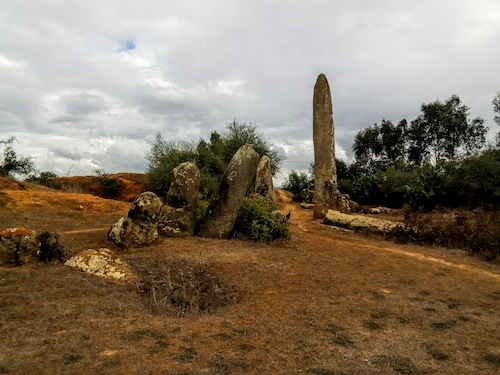

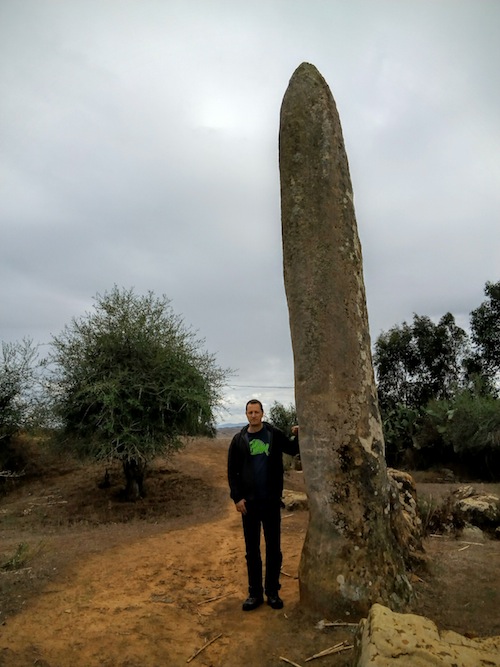
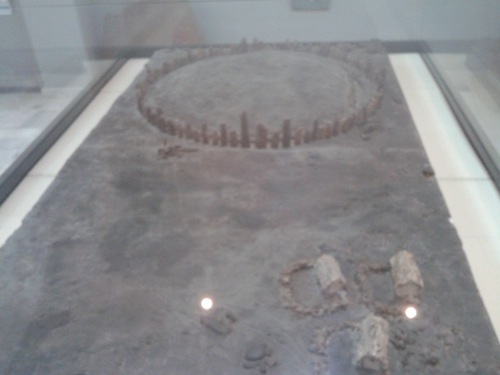
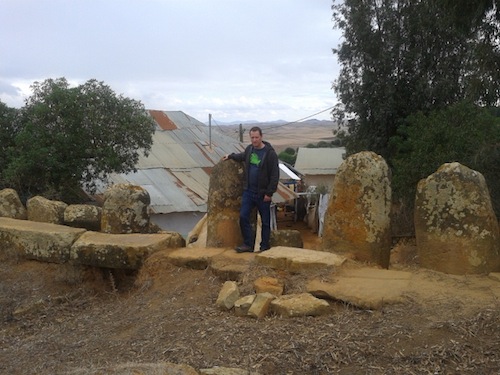
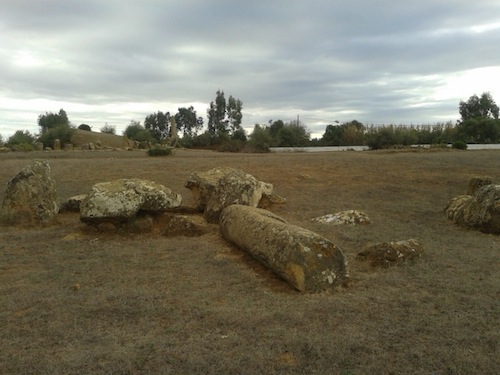
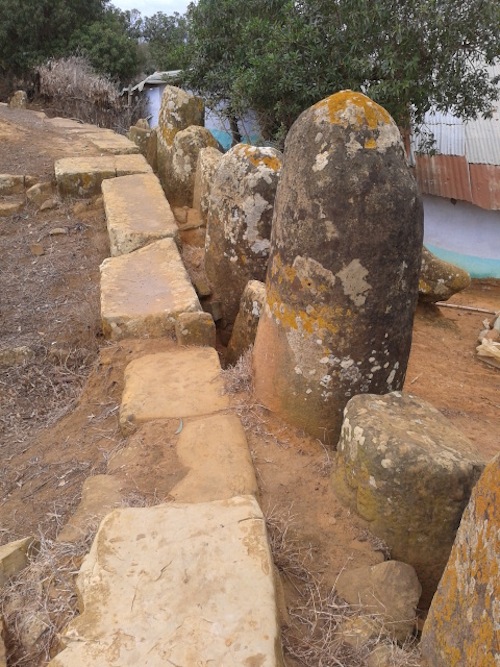
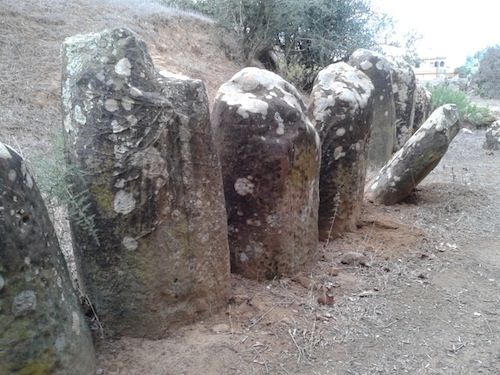
Your posts are always must-reads for me. I had no idea there were sites like this outside of Europe.
Excellent post as always, Sean.
There seems to have been a fair amount of contact between Atlantic Europe and n-w Africa in the late Neolithic. Archaeology and paleogenomics are opening up new vistas.